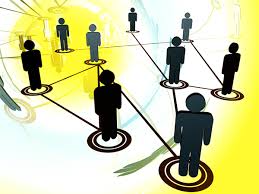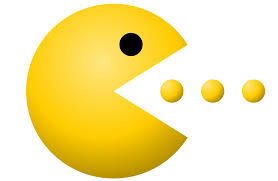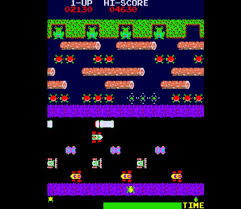 I can’t think of a conversation over the past decade in which someone has defended the status quo in education. So why is it that we aren’t moving? I don’t think the ‘why’ is the reason. I think we leaders have to do a better job with the ‘How’ and the ‘What’ to assist teachers, parents and our students adjust to the new way we need to approach the schooling model. I often feel that when we discuss some new insight that we would like to see implemented in the classroom, that it must seem like a dump truck of big ideas at the classroom door. The administrator backs it up, puts it in park, throws the teacher the keys and walks away leaving the teacher alone to unload the material and fit it into the class.
I can’t think of a conversation over the past decade in which someone has defended the status quo in education. So why is it that we aren’t moving? I don’t think the ‘why’ is the reason. I think we leaders have to do a better job with the ‘How’ and the ‘What’ to assist teachers, parents and our students adjust to the new way we need to approach the schooling model. I often feel that when we discuss some new insight that we would like to see implemented in the classroom, that it must seem like a dump truck of big ideas at the classroom door. The administrator backs it up, puts it in park, throws the teacher the keys and walks away leaving the teacher alone to unload the material and fit it into the class.
When we talk innovation people often hear ‘technology.’ Yes, technology has role but not in and of itself. The power of having so much literally at our finger tips is not the access to information and distractions, it is the power of being connected. It is the ‘social capital’ not the ‘technical capital as Clay Shirky points out about social media. He goes on to point out that for the first time in human history we are simultaneously the consumer AND the producer because of all this connectivity. So what do we do? Well, like most other things we craft it into an ‘add-on’ as a ‘special’ component of a lesson once. We pat ourselves on the back and then sink back into our usual patterns. Why, because we are bad people? No, because we are human. These big dump trucks full of stuff are intimidating.
 Let’s look at something that is currently working well, very well, and consider whether it holds the key to assist in effecting real change. Each week 3 billion hours are spent playing online games. Why games? Well, let’s consider the qualities of a gamer that Jane McGonigal shares with us in her TED Talk. Gamers excel at the following qualities: 1) they have “urgent optimism – the desire to take on an obstacle combined with the sense that you can be successful, 2) they weave tight social fabrics – they connect and collaborate but they develop a high degree of trust, 3) they engage in blissful productivity – they lose themselves in the epic journey and, 4) they pursue things that have epic meaning – they believe that they can change the world!
Let’s look at something that is currently working well, very well, and consider whether it holds the key to assist in effecting real change. Each week 3 billion hours are spent playing online games. Why games? Well, let’s consider the qualities of a gamer that Jane McGonigal shares with us in her TED Talk. Gamers excel at the following qualities: 1) they have “urgent optimism – the desire to take on an obstacle combined with the sense that you can be successful, 2) they weave tight social fabrics – they connect and collaborate but they develop a high degree of trust, 3) they engage in blissful productivity – they lose themselves in the epic journey and, 4) they pursue things that have epic meaning – they believe that they can change the world!
Who wouldn’t want this person in your classroom? On your professional team?
Does it seem crazy or silly to suggest that gamification has some broader implication than merely occupying one’s time or entertaining oneself while waiting for your next flight?
Seth Priebatsch suggests that there may already be a ‘game layer’ on top of the world  and that its current state is messy. If we only harness its power, we can utilize it to make the world better. In his TED Talk he suggests that it’s not merely a vehicle through which to develop a more powerful social fabric. He suggests that gamification is “actually about using dynamics, using forces, to influence the behavior of where you are, what you do there, how you do it.” He goes on to talk about the 1) ‘appointment dynamic’ – be at a certain place at a certain time, 2) the power of ‘influence & status’ – we all want to have a ranking and who is more sensitive to this than a student in a classroom? 3) the ‘Progression Dynamic’ is the idea that you have to go through steps and, 4) ‘Communal Discovery’ – the idea that everyone has to work together to accomplish something. Hmmmm? In a classroom? Really? I think this is worth considering.
and that its current state is messy. If we only harness its power, we can utilize it to make the world better. In his TED Talk he suggests that it’s not merely a vehicle through which to develop a more powerful social fabric. He suggests that gamification is “actually about using dynamics, using forces, to influence the behavior of where you are, what you do there, how you do it.” He goes on to talk about the 1) ‘appointment dynamic’ – be at a certain place at a certain time, 2) the power of ‘influence & status’ – we all want to have a ranking and who is more sensitive to this than a student in a classroom? 3) the ‘Progression Dynamic’ is the idea that you have to go through steps and, 4) ‘Communal Discovery’ – the idea that everyone has to work together to accomplish something. Hmmmm? In a classroom? Really? I think this is worth considering.
Games approach Epic Wins from very small starting points. No high-falutin theory or complicated rubrics. This makes me think of Charles Duhigg and his “The Power Of Habit” where he talks about “keystone habits” – small things that can lead to much larger change. A friend told me that a simple strategy to motivate yourself to play more guitar is to move the guitar’s storage spot closer to where you normally spend your time. More accessible, more likely that you’ll pick it up, and the more you play the better you get. No dump truck! Can a game structure provide small activities that can grow into routines and patterns to effect greater change?
 So, I know what you cynics are thinking. Games are for silly things and not for serious things like changing the status quo or certainly not for something as important as learning, right? Well, consider what Brenda Brathwaite has to say about that in her TED Talk. If she can gamify something as serious as the Middle Passage then I think we can consider gamification seriously. And, there are a number of research papers that evidence the power and benefits of social networking games.
So, I know what you cynics are thinking. Games are for silly things and not for serious things like changing the status quo or certainly not for something as important as learning, right? Well, consider what Brenda Brathwaite has to say about that in her TED Talk. If she can gamify something as serious as the Middle Passage then I think we can consider gamification seriously. And, there are a number of research papers that evidence the power and benefits of social networking games.
Lastly, games involve small patterns that lead to new ‘habits’ and in developing recognition of patterns one can become more acutely aware and focused in what Steven Kotler refers to as “in the moment cognition.” In his “Flow Genome Project,” Kotler lists out specific triggers that can lead one to Flow. I first heard of Flow years ago with the work of Mihaly Csikszentmihalyi. Kotler picks it up and looks through the lens of the extreme athlete.
If we can find the triggers and activities that lead to routines and patterns, along the way we can enhance resiliency and create conditions through which we can get people to Flow. We merely have to uncover the existing game layer and structure it to hack Flow and change the status quo.
So, let’s power up! Game On!
